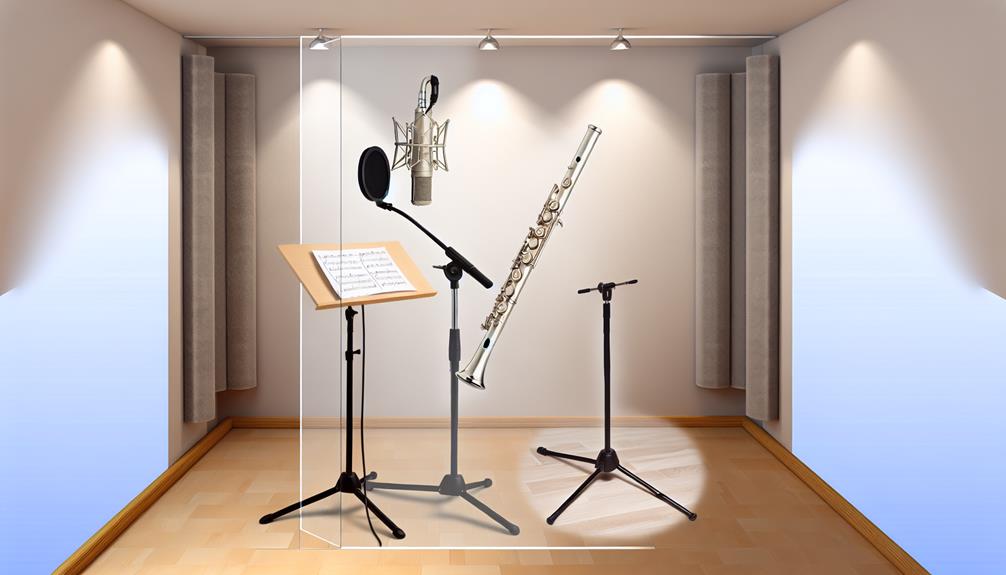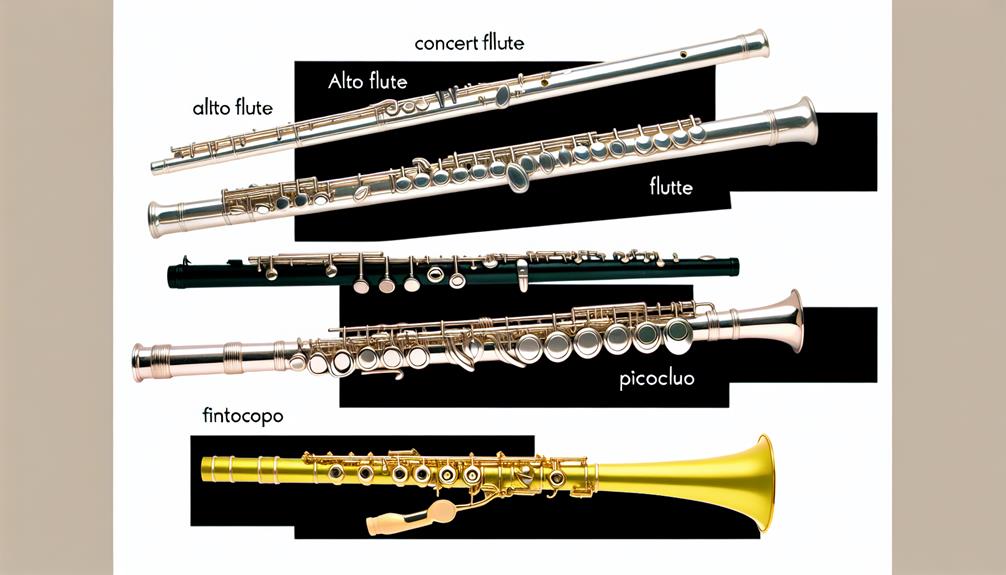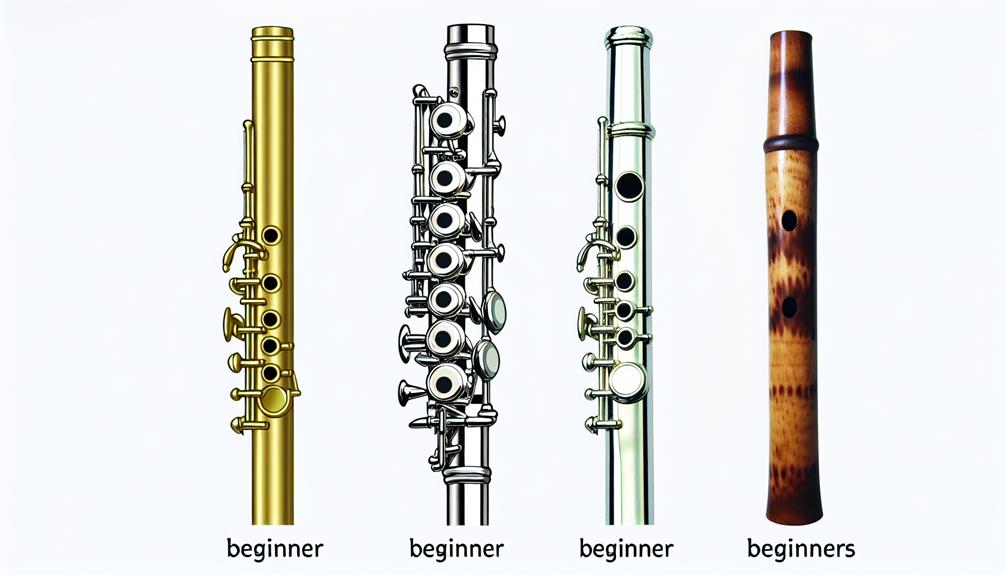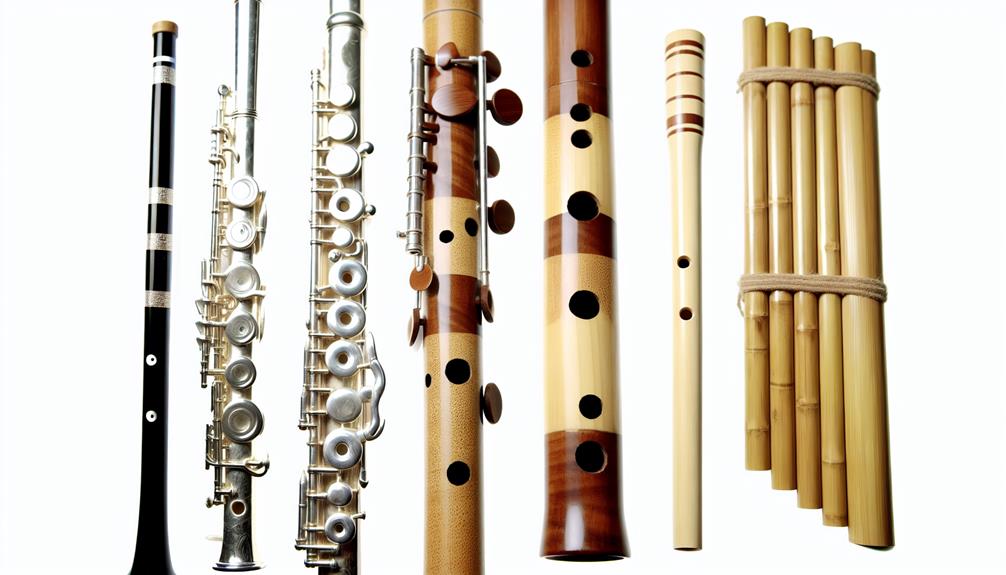When embarking on a musical journey with the flute, aspiring musicians often seek clarity on which type might offer a smoother learning curve. From the simplicity of the recorder flute to the intricate nuances of the concert flute, each variant presents unique challenges and advantages.
By examining factors such as size, fingering techniques, and breath control, one can begin to discern which flute type may be the most accessible for beginners. As we explore the characteristics of each flute, a clearer path towards mastering this elegant instrument may come into view.
Key Takeaways
- The Recorder Flute and Irish Tin Whistle are the easiest flutes to learn due to their simple design and fingering.
- Fife Flute offers straightforward fingering suitable for beginners with a rich historical background.
- Transverse and Concert Flutes require more advanced techniques but lay a strong foundation for mastery.
- Beginners may prefer Recorder Flute or Irish Tin Whistle, while those into classical music may choose Transverse Flute.
Benefits of Learning the Recorder Flute
Learning the recorder flute offers numerous advantages for beginners looking to delve into the world of music. The recorder flute, with its simple design and ease of use, provides a gentle introduction to the fundamentals of music for aspiring musicians. One of the key benefits of starting with the recorder flute is its affordability, making it accessible to a wide range of individuals who may be hesitant to invest in a more expensive instrument at the outset of their musical journey. Additionally, the recorder flute helps beginners develop essential skills such as breath control, finger coordination, and basic music theory in a gradual and manageable manner.
Moreover, the recorder flute is a versatile instrument that can be played in various musical genres, from classical to folk music, allowing beginners to explore different styles and find their musical niche. Its compact size and portability make it convenient for practice and performance, enabling learners to easily incorporate music into their daily routines. Overall, the recorder flute serves as a welcoming entry point for newcomers to the world of music, fostering a sense of belonging and accomplishment as they embark on their musical endeavors.
Introduction to the Transverse Flute
The transverse flute, also known as the side-blown flute, is a popular woodwind instrument with a rich history in various musical traditions. This elegant instrument is held horizontally to the right of the player, with the player blowing across the mouthpiece hole to produce sound. The transverse flute has been a staple in classical music, jazz, and even popular music genres, showcasing its versatility and adaptability.
One of the key features of the transverse flute is its sleek design, typically made of metal, silver, nickel silver, or various types of wood. The flute consists of three main parts: the headjoint, the body, and the footjoint, each contributing to the instrument's unique tone and playability.
Learning to play the transverse flute can be a rewarding experience for beginners and seasoned musicians alike. With proper instruction and practice, individuals can master breath control, finger dexterity, and musical expression on this beautiful instrument. Whether playing solo or in ensemble settings, the transverse flute offers a wide range of musical possibilities for those seeking to explore its melodic charms.
Exploring the Irish Tin Whistle
Amidst the diverse world of wind instruments, the Irish Tin Whistle stands out for its distinct sound and cultural significance. This simple, six-holed wooden flute is a staple in traditional Irish music, adding a unique charm to folk melodies and lively jigs.
Here are three reasons why exploring the Irish Tin Whistle can be a rewarding experience:
- Portability: The Irish Tin Whistle is compact and lightweight, making it easy to carry around and play anywhere. Whether you're traveling, attending a music session, or simply enjoying the outdoors, this instrument allows you to create beautiful music on the go.
- Affordability: Compared to many other musical instruments, the Irish Tin Whistle is relatively inexpensive, making it accessible to beginners and seasoned musicians alike. You can start your musical journey without breaking the bank and still enjoy the rich tones and melodies this flute has to offer.
- Cultural Connection: Learning to play the Irish Tin Whistle can provide a sense of cultural belonging and appreciation for Irish heritage. By mastering this traditional instrument, you can connect with a vibrant musical tradition that spans generations and crosses borders.
Understanding the Fife Flute
Originating from Europe during the Renaissance period, the Fife Flute is a small, high-pitched instrument with a rich history and distinctive sound. Traditionally made of wood, the fife is a simple yet elegant instrument that has been used in various military and folk music settings.
Its compact size and straightforward fingering make it an accessible choice for beginners looking to delve into the world of flute-playing. Despite its small stature, the fife produces a surprisingly bright and clear tone that can easily cut through other instruments in ensemble settings. This makes it a popular choice for marching bands, historical reenactments, and traditional folk music performances.
With its roots deeply embedded in European musical traditions, learning to play the fife not only offers a gateway to exploring historical music but also provides a sense of connection to a bygone era.
Simplifying the Concert Flute
Exploring the intricacies of the Concert Flute reveals its elegance and versatility within the realm of musical performance. The Concert Flute, also known as the Western Classical flute, is a popular choice among musicians due to its rich sound and wide range. Simplifying the learning process for this intricate instrument can make it more accessible for beginners seeking to master its beauty.
Here are three ways to simplify the Concert Flute learning experience:
- Proper Posture and Hand Placement: Ensuring correct posture and hand positioning is crucial for producing clear and melodious tones. Beginners should focus on holding the flute parallel to the ground, keeping the fingers relaxed and curved over the keys, and maintaining a straight back to support proper breathing techniques.
- Start with Basic Scales and Exercises: Building a strong foundation is key to mastering the Concert Flute. Beginners should start with simple scales, arpeggios, and finger exercises to improve dexterity, tone quality, and intonation.
- Consistent Practice and Patience: Learning any instrument requires dedication and practice. Setting aside regular practice sessions and being patient with progress is essential for developing proficiency on the Concert Flute.
Frequently Asked Questions
Can the Type of Flute You Choose to Learn Affect Your Ability to Play Other Types of Flutes in the Future?
The type of flute you choose to learn can impact your ability to play other types in the future. Different flutes have unique fingerings, embouchure techniques, and tonal qualities, making transitioning between them more challenging.
Are There Specific Genres of Music That Are Easier to Play on Certain Types of Flutes?
Certain genres of music may align better with specific types of flutes due to their tonal characteristics and historical context. For instance, classical music often complements the refined sound of a silver flute, while traditional folk tunes resonate beautifully on a wooden flute.
How Do the Physical Characteristics of Different Types of Flutes Impact the Learning Process?
The physical characteristics of different types of flutes can significantly impact the learning process. Factors such as weight, size, and key mechanisms can influence a player's comfort, technique development, and overall musical expression.
Are There Any Unique Challenges or Advantages to Learning a Less Common Type of Flute?
Exploring lesser-known flutes can offer both challenges and advantages. Unique timbres and playing techniques present opportunities for artistic growth. However, limited resources and community support may hinder the learning process.
How Do the Costs of Different Types of Flutes Compare, and Does Price Affect the Ease of Learning a Particular Type of Flute?
When comparing the costs of different types of flutes, factors such as material, brand, and craftsmanship influence pricing. While price may not directly correlate with ease of learning, investing in a well-made instrument can enhance the learning experience.
Conclusion
In conclusion, when considering the easiest type of flute to learn, the recorder flute stands out as an accessible option for beginners. Its simple design and fingerings make it a great starting point for those new to the instrument.
Remember, 'Rome wasn't built in a day', so be patient with yourself as you embark on your musical journey with the recorder flute.






